As businesses become bigger, the number of devices on the network can explode, rapidly becoming a headache for anyone trying to manage the associated IP addresses. For a small business, it might be feasible for the network admin to manage IP addresses and network information manually using spreadsheets. But for larger enterprises, IP address management (IPAM) software is crucial.
IPAM software helps keep track of IP addresses and other network data and can translate between DNS and DHCP address information. Basically, it automates much of the work of managing IP addresses while putting it all in a user-friendly interface. This is critical, as staying on top of IP addresses helps ensure business connectivity and even allows proactive network configuration.
There are so many different IPAM tools out there and knowing which one is right for your business can be a daunting prospect. To help you decide, I’ve made a list of paid and free IPAM tools to assist you with the management of the network in your small business or large enterprise.
My top choice is SolarWinds® IP Address Manager, due to its extensive feature list, intuitive and integrated user interface, and ability to manage IP, DHCP, and DNS info, all from a centralized console.
Why You Need IP Address Management Software?
Top IPAM Solution – my personal favorite
Best IPAM Software
There are several different free and paid IP address management software tools available today. Each one has its pros and cons, depending on what your business needs.
1. SolarWinds IP Address Manager (Free Trial)
My favorite IPAM tool is SolarWinds IP Address Manager, as it’s very versatile and can suit both large enterprises and smaller businesses. This IP scanning solution offers all the features you need for:
- automated and integrated DHCP, DNS, and IP address management,
- monitoring IP addresses,
- detecting subnet capacity issues.
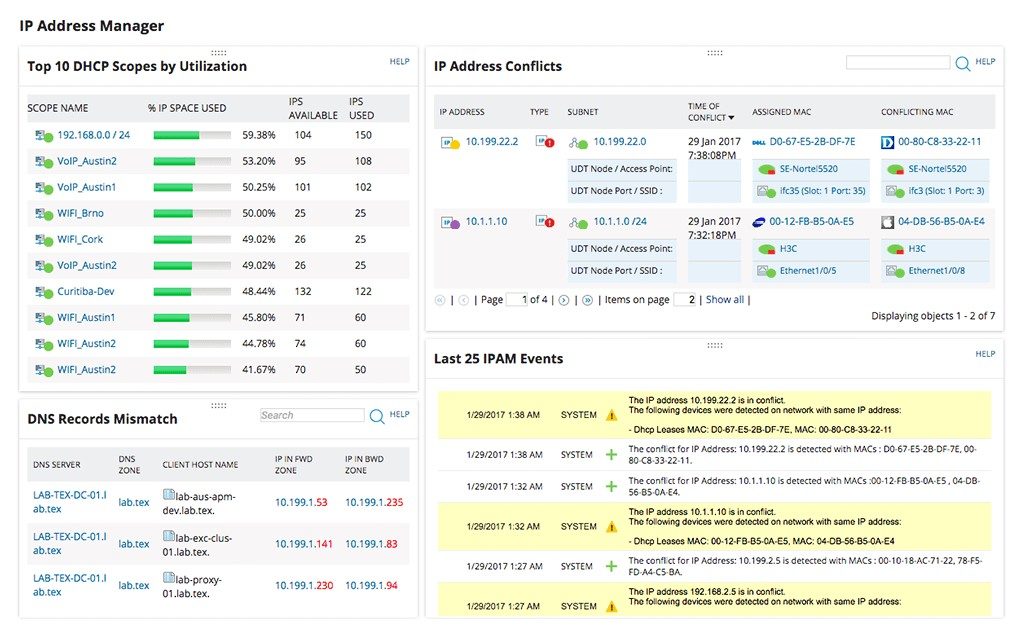
Users find this dashboard clean and intuitive, which is a big plus. I’d bet that IPAM’s at-a-glance IP address tracker interface features will streamline many of your tasks. Plus, different admins or admin groups can be easily assigned specific control permissions. Overall, SolarWinds IP Address Manager is a complete solution suitable for small to large businesses, and I recommend it as my top pick for a solid IPAM tool. If you need to get started yesterday, jump in with the fully functional 30-day free trial.
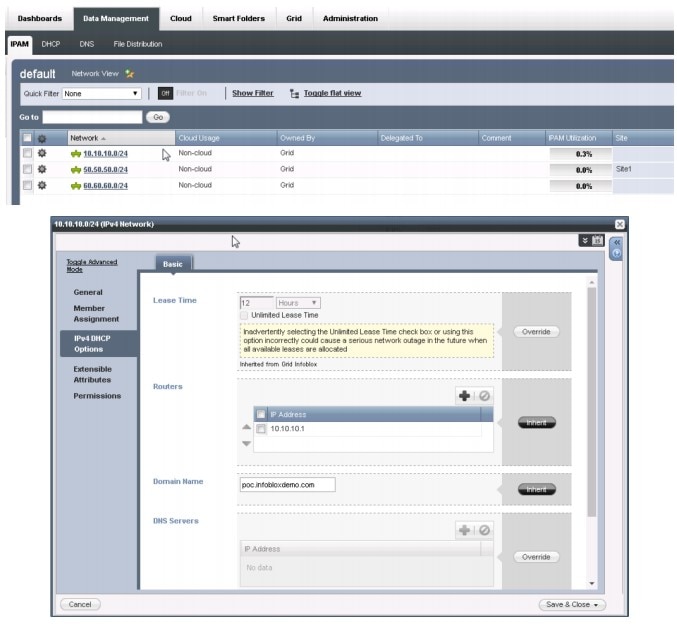
Another option to consider is the Infoblox IPAM for Windows, which is a costlier option, but highly reliable. It uses special Grid technology to integrate directly into your network while distributing risk. This tool closely combines DNS, DHCP, and IP management so you can manage all your core network services easily and seamlessly.
The Infoblox solution is “heavy duty,” as it’s a completely purpose-built app to replace your enterprise’s entire DHCP/DNS infrastructure and management tools. However, some features of Infoblox can be unnecessarily complex. As with SolarWinds, you can download a free version of this product as an “evaluation”—it just comes with some limitations.
3. BlueCat IPAM
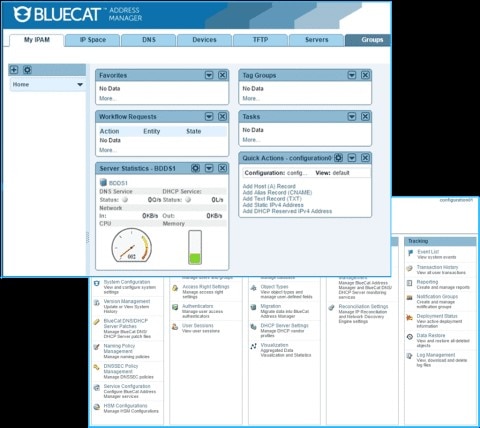
BlueCat IPAM is another well-known player in the IP address management tool field, but like Infoblox, its functionality leans more strongly towards suiting a data center or web service enterprise, rather than a smaller or medium-size business.
BlueCat includes features such as change management workflows and options for delegating tasks to other staff members. You can also schedule changes to occur later, which can be helpful in some circumstances.
However, BlueCat has a relatively steep learning curve, and the data output suffers from limited reporting options.
4. LightMesh IPAM
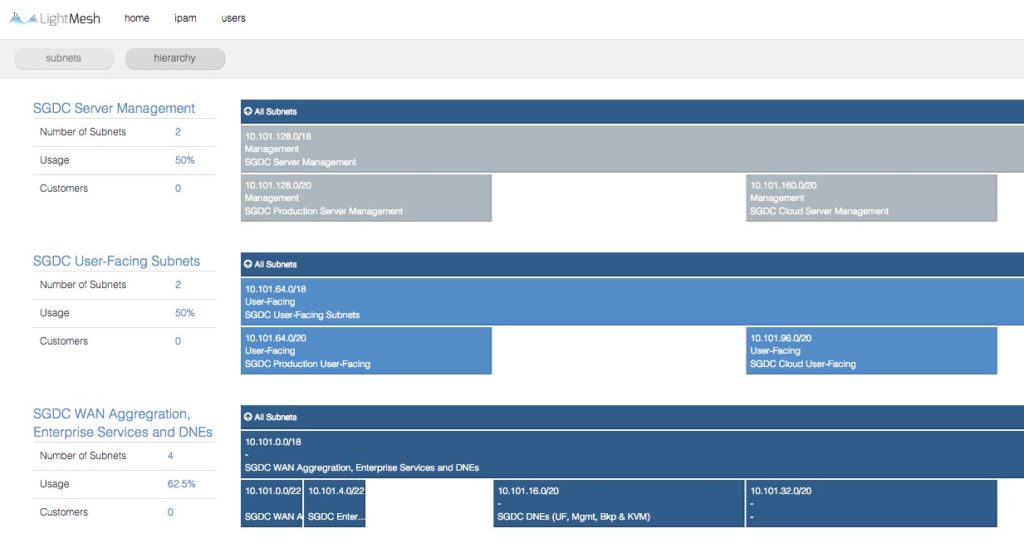
The main benefit of the LightMesh solution is its clean and neat interface, with a modern look and sophisticated UI. It does an excellent job of presenting information in an easy-to-understand and enjoyable way. LightMesh offers the same functionality as other IPAM tools and can be a simple solution for many different enterprise environments. The tool is built for simplicity, which many admins will appreciate, while others may prefer a bit more customizable and detailed dashboard.
5. phpIPAM
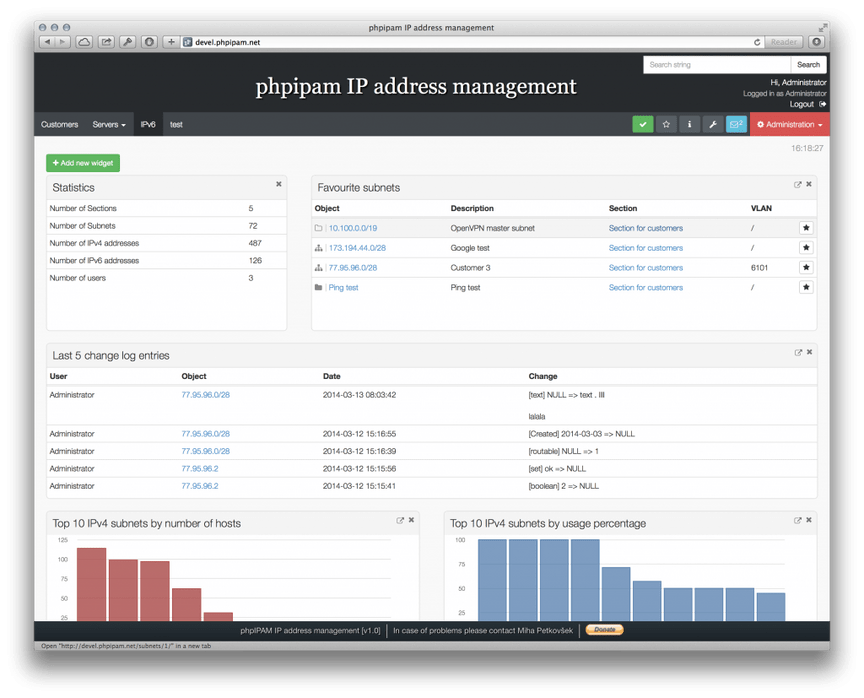
If you’re looking for a free IPAM software for Windows, this is a decent open-source option. Of course, it comes with all the typical pluses and minuses of open-source software, which isn’t necessarily the best choice for a lot of businesses. But it’s well-built, with a MySQL database back-end, subnet management, PowerDNS integration, and other decent features.
Why Do You Need IP Address Management Software?
IP address management is a complicated beast. Admins must keep track of which device has which IP, whether the IPs are static or dynamic, whether any IPs are reserved when IPs were assigned, and so on. Excel spreadsheets can manage the bulk of this if the business is small and if the number of devices stays relatively static. However, as an enterprise grows, it becomes increasingly difficult to manage IP addresses manually, and effective IP address management becomes important for several key reasons.
- Network Health and Information – IPAM tools are useful for is general network health. When using IPAM software, you can see which device has which IP and when it was assigned, which can help to prevent conflicts and network outages if a problem needs to be quickly discovered and resolved. It can also help organize and keep track of subnets, particularly if you manage multiple subnets at the same time. For troubleshooting current issues and being proactive about potential future conflicts, IPAM tools offer important insights.
- Compliance – IP address information is sometimes necessary for regulatory or legal compliance. For example, if there has been an information breach or issue with the network that caused flow-on effects, using IPAM software can help you pinpoint where the compliance issue arose. It can also ensure your network is secure—when combined with a network access control (NAC) system, IPAM data can indicate if security software is up-to-date or in use.
- Security – Regarding further security, IPAM tools can also help you discover unusual network patterns or changes in IP addresses that may indicate a virus or network breach.
Top IPAM Solution – my personal favorite
When it comes to choosing an IP address management solution, my pick is SolarWinds IP Address Manager. The price is right, and the tool is built with every size of organization in mind. It provides great core functionality with an easy-to-use interface and customizable features. Plus, you get great customer support. For businesses looking to get started with IP management, I suggest starting with one of the free SolarWinds options to explore the advantages for yourself.
Related Reading
Ultimate Guide to Network Monitoring – If you need further information on how to monitor your network and keep it healthy and secure, check out this post. It includes information for beginners, as well as more advanced network professionals.


